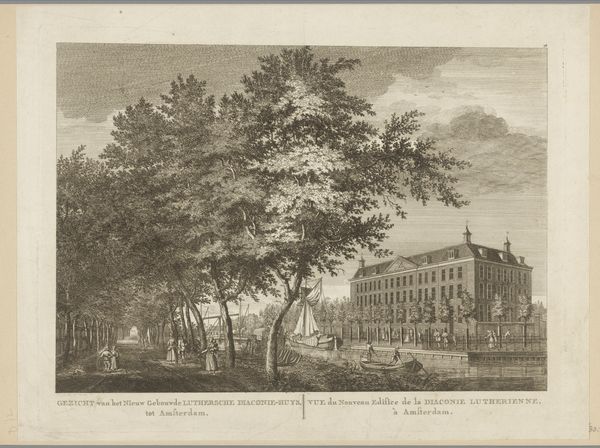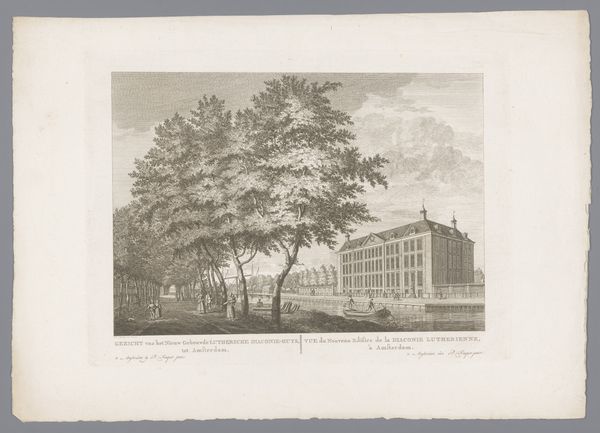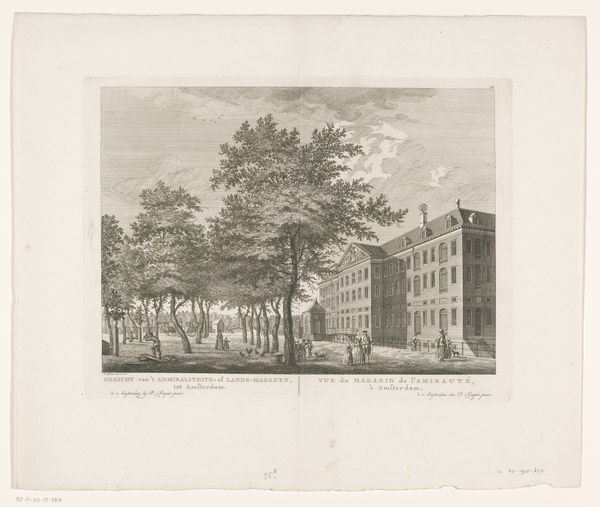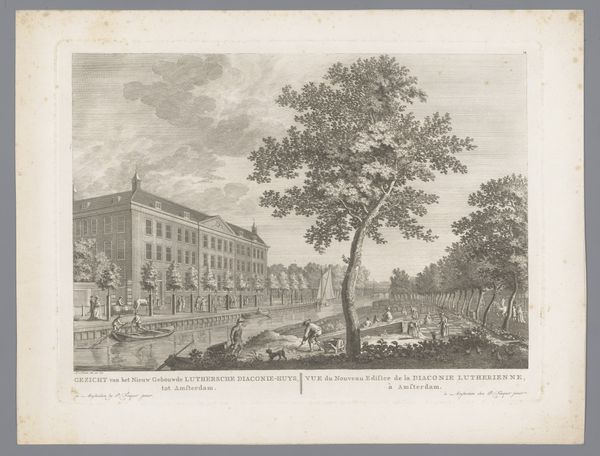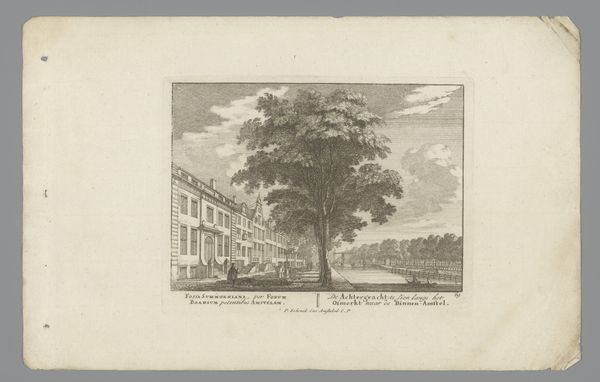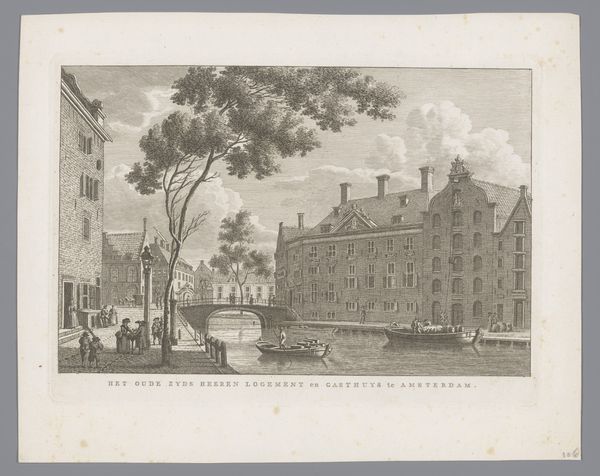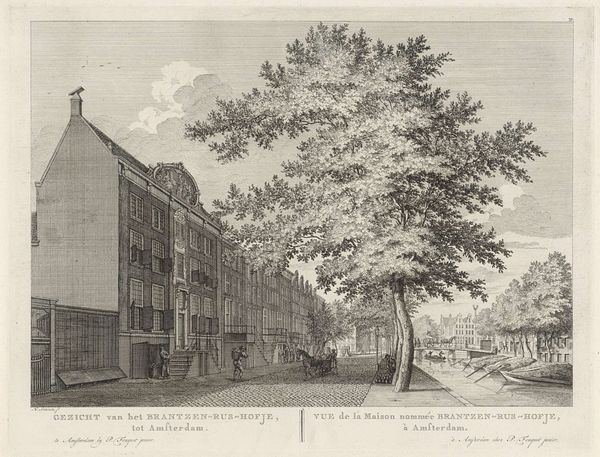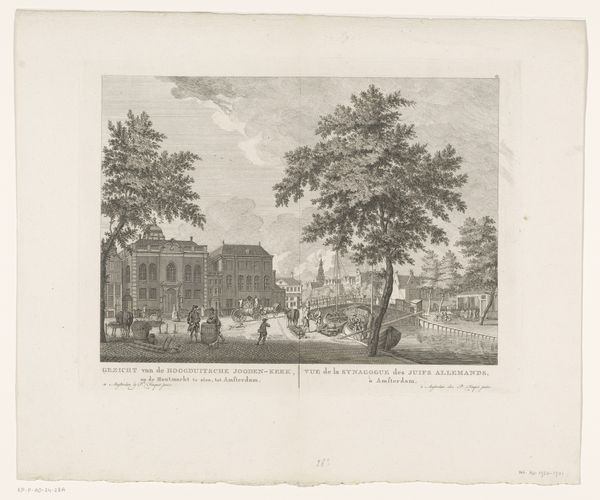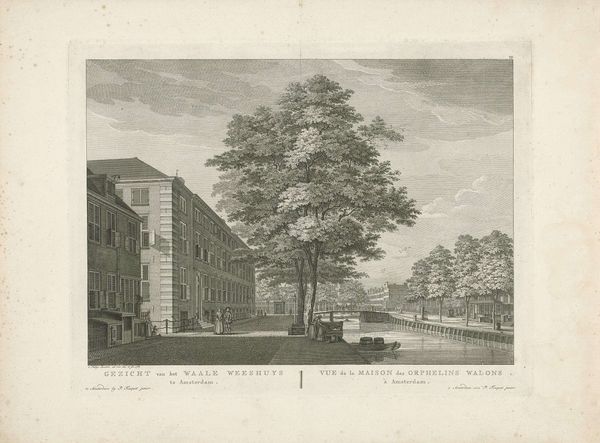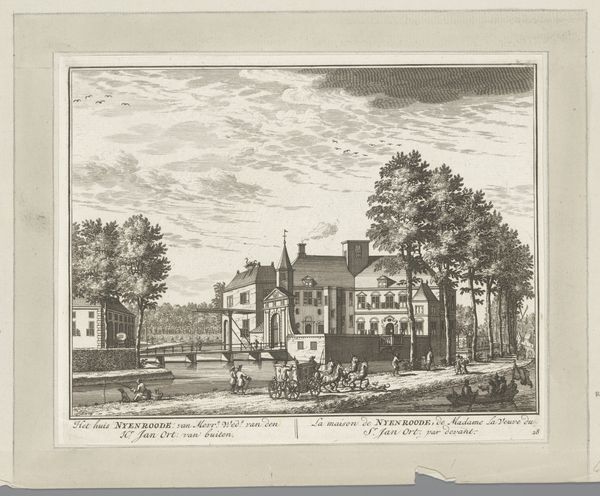
Gezicht op het Doopsgezinde Weeshuis te Amsterdam c. 1770 - 1783
0:00
0:00
print, etching
#
dutch-golden-age
# print
#
etching
#
landscape
#
cityscape
#
realism
Dimensions: height 274 mm, width 366 mm
Copyright: Rijks Museum: Open Domain
This is Hermanus Petrus Schouten’s rendering of the Doopsgezinde Weeshuis in Amsterdam. It's a carefully etched print capturing the orphanage, offering us a glimpse into the architecture and daily life of 18th-century Amsterdam. Consider the era: the late 1700s, a time of social stratification where institutions like orphanages played a crucial role. These were places where society’s most vulnerable—often children from marginalized communities—found refuge. But they were also sites of strict social control. Schouten’s choice to depict this orphanage invites us to reflect on the experiences of these children. What did it mean to grow up within the walls of such an institution? What expectations were placed upon them? The image offers a window into a world that, while intended to provide care, also enforced a certain way of life, raising questions about social mobility and the shaping of identity within these confines. It invites us to reflect on how society cares for its most vulnerable members.
Comments
No comments
Be the first to comment and join the conversation on the ultimate creative platform.
